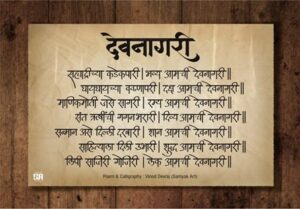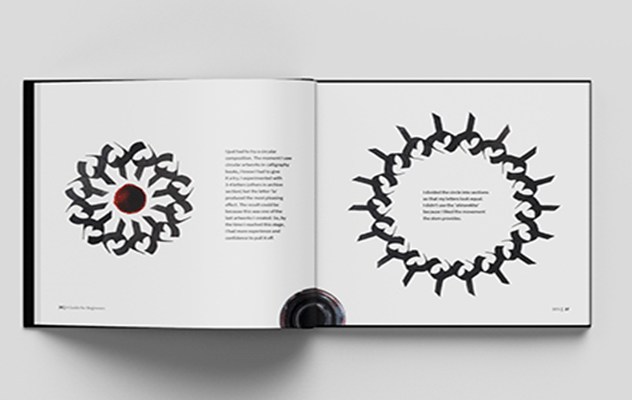Devanagari is a combination of the word’s deva and nagari. Deva translates as “heavenly,” “divine,” or “deity.” Nagari derives from Nagaram, a Sanskrit word that means “town.” Devanagari can therefore be rendered as “from the home of divinity.” The ancient term Nagar gave rise to the name Devanagari.
Nagari was one of the primary scripts used for the Sanskrit literature and first appeared in the northwest of the Indian subcontinent around 633 CE. It was fully evolved by the 11th century CE.

The 1st to 4th century CE inscriptions found in Gujarat provide some of the earliest epigraphic evidence of the development of the Sanskrit Nagar script in ancient India. [10] Nagar script variants, which are recognisable as being close to Devanagari, are first documented in Sanskrit Rudradaman inscriptions from the first century CE,Inscriptions from the Middle Ages indicate widespread use of scripts related to the Nagari, with scripts exhibiting local script alongside the adoption of Nagari scripts. For instance, the Siddha Matrika script and an early Telugu-Kannada script can both be found on the Pattadakal pillar from the middle of the eighth century in Karnataka.
By the seventh century CE, the Nagari script was in widespread use, and by the end of the first millennium, it had reached its full development. Numerous pillar and cave-temple inscriptions, like the 11th-century Udayagiri inscriptions in Madhya Pradesh, attest to the employment of Sanskrit in Nagari script in mediaeval India.
Moreover, the British Museum is home to an inscribed brick from 1217 CE that was discovered in Uttar Pradesh. Prototypes of the script and related variations have been found alongside historic artefacts outside of India, in places including Sri Lanka, Myanmar, and Indonesia. Buddhists in East Asia used the Siddha Matrika script, which is thought to be the closest ancestor of Nagari has historically been the foremost among the Indian scripts.
It has been used by religiously educated people in South Asia for a very long time to record and convey information, coexisting alongside a wide range of regional scripts (such as Mo, Kaithi, and Mahajani) used for administration, trade, and other daily activities all throughout the country.
In Kashmir, Sharada is still used in parallel. The Kutila inscription of Bareilly, which dates to VS 1049 (992 CE), exhibits the formation of the horizontal bar to combine letters pertaining to a word in an early form of Devanagari. [1] With a writing date of roughly 150 BCE and a transcription date of the 14th century CE, the 1,413 Nagari pages of a commentary by Patanjali are one of the earliest Sanskrit manuscripts from the early post-Maurya period still in existence.
Penkraft conducts classes, course, online courses, live courses, workshops, teachers’ training & online teachers’ training in Handwriting Improvement, Calligraphy, Abacus Maths, Vedic Maths, Phonics and various Craft & Artforms – Madhubani, Mandala, Warli, Gond, Lippan Art, Kalighat, Kalamkari, Pichwai, Cheriyal, Kerala Mural, Pattachitra, Tanjore Painting, One Stroke Painting, Decoupage, Image Transfer, Resin Art, Fluid Art, Alcohol Ink Art, Pop Art, Knife Painting, Scandinavian Art, Water Colors, Coffee Painting, Pencil Shading, Resin Art Advanced etc. at pan-India locations. With our mission to inspire, educate, empower & uplift people through our endeavours, we have trained & operationally supported (and continue to support) 1500+ home-makers to become Penkraft Certified Teachers? in various disciplines.

